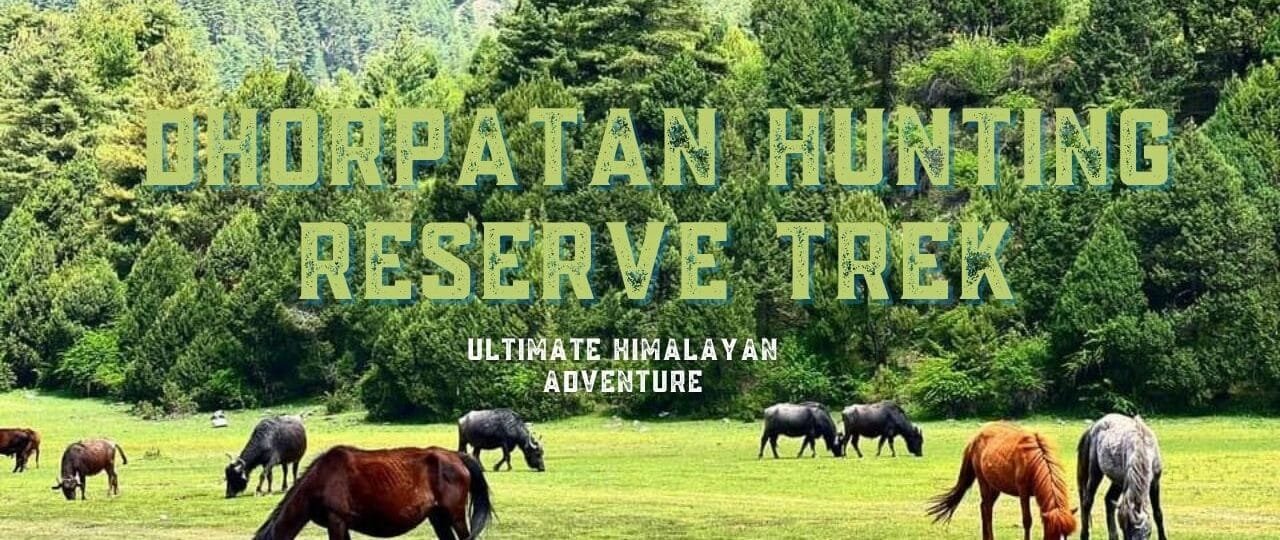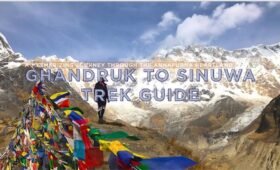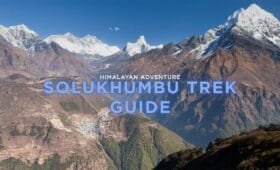The Dhorpatan Hunting Reserve Trek is one of Nepal’s most unique trekking experiences. Nestled in the wild expanses of Dhorpatan Hunting Reserve Nepal, this trek offers an unforgettable blend of raw natural beauty, abundant wildlife, and cultural intrigue. Whether drawn to a carefully planned Dhorpatan Trek Itinerary or curious about the region’s challenges and rewards, this comprehensive guide provides all the necessary details. This article discusses everything from trek cost, difficulty, and permits to maps, weather, accommodation, and packing lists. Alongside practical advice, you’ll find statistics, quotes from seasoned trekkers, and success stories aimed at inspiring your journey. Plus, discover how joining this trek with Volunteers Initiative Nepal (ViN) fulfills your adventurous spirit and empowers local communities.
1. Introduction: Discover the Dhorpatan Hunting Reserve Trek
The Dhorpatan Hunting Reserve Trek is a unique adventure that takes you deep into one of Nepal’s most expansive and remote protected areas. Unlike the more frequented treks in the Everest or Annapurna regions, the Dhorpatan region offers a rare glimpse into Nepal’s wild, untamed landscapes. This trek is perfect for travelers who crave solitude and authenticity. With its diverse wildlife, rugged terrain, and rich cultural history, the Dhorpatan Hunting Reserve Trek is a truly transformative experience.
Dhorpatan Hunting Reserve Nepal is known for its abundant flora and fauna. Trekkers on this route enjoy panoramic views, encounter rare wildlife, and interact with indigenous communities who live in harmony with nature. The trek’s carefully designed Dhorpatan Trek Itinerary ensures you get the most out of every step, from exploring dense forests to witnessing breathtaking high-altitude vistas.
“My trek in Dhorpatan was unlike any other adventure. The untouched wilderness, the thrill of encountering native wildlife, and the serenity of nature combined to create an experience I’ll cherish forever,” says Kamal, a seasoned trekker from India.
This guide will walk you through every journey detail, providing valuable insights into the Dhorpatan Trek Cost, difficulty, permits, and more. Let’s begin our exploration into the wild beauty of Dhorpatan Hunting Reserve.
2. Historical and Cultural Background
2.1 The Legacy of Dhorpatan Hunting Reserve
The Dhorpatan Hunting Reserve Trek is steeped in history. Established in 1987, Dhorpatan Hunting Reserve Nepal covers an area of over 1,325 square kilometers, making it the most extensive hunting reserve in Nepal. This reserve conserves the country’s unique wildlife and preserves the traditional way of life for local communities. Historically, the area has been a hunting ground for local tribes, and its legacy continues to influence today’s cultural landscape.
2.2 Cultural Significance and Local Heritage
Local communities within and around Dhorpatan have adapted to the region’s challenging environment through centuries of tradition and resilience. The area is home to various ethnic groups who maintain age-old customs and practices. Trekkers can visit traditional villages, experience local festivals, and even participate in community gatherings. This cultural immersion enriches the trek and offers insights into the relationship between humans and nature in one of Nepal’s most remote regions.
“Trekking in Dhorpatan is not just about the scenery—it’s about connecting with people whose lives are deeply intertwined with the land. Their stories and traditions add a profound dimension to the journey,” shares Sita, a volunteer guide from Nepal.
The historical and cultural context of Dhorpatan makes the Dhorpatan Hunting Reserve Trek a multifaceted adventure that extends beyond physical endurance to include spiritual and artistic exploration.
3. Detailed Itinerary: Your Dhorpatan Trek Itinerary
A well-planned Dhorpatan Trek Itinerary is essential for a rewarding adventure. The itinerary below is designed for a 12-day trek, though it can be customized based on fitness levels and personal preferences.
Day 1: Arrival in Kathmandu
- Activities: Arrive in Kathmandu, transfer to your hotel, and attend an orientation meeting.
- Highlights: Explore the vibrant streets of Thamel and prepare for your upcoming journey.
- Overnight: Hotel in Kathmandu.
Day 2: Kathmandu to Jajarkot (Drive)
- Transport: Drive from Kathmandu to Jajarkot by private vehicle or shared jeep.
- Highlights: Scenic views of the rural landscape.
- Overnight: Local guesthouse in Jajarkot.
Day 3: Jajarkot to Dhorpatan Base
- Trekking Duration: Approximately 5–6 hours.
- Route: Begin trek along forest trails and open meadows, gradually ascending toward the Dhorpatan base.
- Highlights: Lush vegetation and the first glimpses of rugged terrain.
- Overnight: Basic teahouse in the Dhorpatan region.
Day 4: Dhorpatan Base to Main Camp
- Trekking Duration: 6–7 hours.
- Route: Ascend further into the reserve, navigating rocky paths and steep inclines.
- Highlights: Dramatic landscapes and wildlife sightings.
- Overnight: Campsite or teahouse near the main camp.
Day 5: Acclimatization Day at Main Camp
- Activities: Short hikes in the area to allow your body to acclimatize.
- Highlights: Enjoy panoramic views and observe the local flora and fauna.
- Overnight: Stay at the main camp.
Day 6: Main Camp to High Camp
- Trekking Duration: 5–6 hours.
- Route: A challenging yet rewarding ascent to the high camp, where the landscape becomes more barren.
- Highlights: Breathtaking views of surrounding peaks and chances to spot elusive wildlife.
- Overnight: Campsite at high camp.
Day 7: High Camp to Summit Pass and Back
- Trekking Duration: 7–8 hours.
- Activities: A day-long trek to the summit pass for a 360-degree panorama of the reserve.
- Highlights: Stunning views of snow-capped mountains and expansive valleys.
- Overnight: Return to high camp for rest.
Day 8: High Camp to Lower Camp
- Trekking Duration: 5–6 hours.
- Route: Descend gradually to a lower camp while enjoying the contrast between high alpine terrain and lower forested areas.
- Highlights: Changing ecosystems and breathtaking valley views.
- Overnight: Teahouse or camp at the lower camp.
Day 9: Lower Camp to Dhorpatan Base
- Trekking Duration: 5–6 hours.
- Route: A gentle descent back to the Dhorpatan base, retracing your earlier steps.
- Overnight: Teahouse at Dhorpatan base.
Day 10: Dhorpatan Base to Jajarkot (Trek/Drive)
- Trekking Duration: 4–5 hours before transfer.
- Activities: Complete the trek portion and prepare for a vehicle transfer back to Jajarkot.
- Overnight: Local guesthouse in Jajarkot.
Day 11: Jajarkot to Kathmandu (Drive)
- Transport: Return drive from Jajarkot to Kathmandu.
- Activities: Enjoy the scenic journey back and reminisce about your trek.
- Overnight: Hotel in Kathmandu.
Day 12: Departure from Kathmandu
- Activities: Final debrief, souvenir shopping, and departure.
- Overnight: N/A.
This Dhorpatan Trek Itinerary provides a balanced mix of challenging ascents, essential acclimatization days, and cultural engagement opportunities. It is designed to help trekkers experience the wild beauty and unique culture of Dhorpatan Hunting Reserve Nepal.
4. Trek Route and Distance Overview
The Dhorpatan Trek Map is crucial for planning your journey through this rugged and remote region. The Dhorpatan Trek Route covers approximately 120–150 km round-trip, depending on the specific trails. The trek offers a unique blend of dense forest trails, alpine meadows, and rocky paths.
Key Segments of the Route:
- Jajarkot to Dhorpatan Base: The journey begins with a gradual ascent from rural Jajarkot into the heart of the Dhorpatan region. Lush forests and open fields characterize this section.
- Dhorpatan Base to Main Camp: As you progress, the terrain becomes more rugged, and the views of the surrounding hills and valleys become increasingly dramatic.
- Main Camp to High Camp: The most challenging segment of the trek, featuring steep ascents, rocky trails, and significant elevation gains.
- Summit Pass is a detour for those seeking panoramic views, where you can enjoy the majesty of snow-capped peaks.
- Descent: The return journey retraces your steps, allowing you to absorb the changing landscapes from a different perspective.
Local trekking agencies offer detailed Dhorpatan Trek Maps highlighting critical waypoints, teahouse locations, and potential hazards. Using these maps and guidance from a local Dhorpatan Trek Guide ensures that you navigate the route safely and efficiently.
5. Assessing Trek Difficulty and Altitude
The Dhorpatan Trek Difficulty is generally categorized as challenging due to its remote location, rugged terrain, and significant elevation changes. While the trek does not reach the extreme altitudes of Everest Base Camp, it still requires a high level of fitness and preparation.
Factors Contributing to Trek Difficulty:
- Elevation and Altitude: The trek involves a gradual ascent from around 1,500m in Jajarkot to high camps that can reach 500 m or more. Although this is lower than some Himalayan treks, altitude acclimatization is essential.
- Terrain: Expect a mix of well-trodden paths, rocky trails, and steep inclines. The path can be uneven, with natural obstacles like streams and fallen rocks.
- Duration: With trekking days ranging from 5 to 8 hours, the overall distance covered is substantial. Continuous walking, especially on steep slopes, demands physical endurance.
- Weather Conditions: Weather can be unpredictable in the Dhorpatan region. Rapid changes can affect trail conditions and visibility, making the trek challenging.
The Dhorpatan Trek offers an exhilarating challenge for experienced trekkers. Hiring a knowledgeable Dhorpatan Trek Guide is advisable for novices to ensure safety, provide route insights, and help manage acclimatization effectively.
6. Budgeting Your Adventure: Dhorpatan Trek Cost
Understanding the Dhorpatan Trek Cost is a key aspect of planning your journey. The cost of the trek can vary widely based on several factors, such as transportation, accommodation, permits, guide services, and personal spending habits.
Cost Breakdown:
- Transportation:
- Kathmandu to Jajarkot: Public transport options, such as buses or shared jeeps, are economical and cost approximately USD 10–20 per person.
- Kathmandu to Jajarkot (Private Transfer): A private transfer might cost around USD 100–150 if you prefer more comfort.
- Accommodation and Meals:
- Teahouse Lodging: Basic teahouse rates in the Dhorpatan region range from USD 3–8 per night, with higher rates at more remote or high-altitude stops.
- Daily Meals: Budget around USD 20–30 per day for local Nepali cuisine. Prices may vary depending on altitude and location.
- Permits and Fees:
- Dhorpatan Hunting Reserve Permit: Required for trekking in this region, typically costing around USD 30–40.
- TIMS Card (if applicable): Approximately USD 10–20 if your trek extends into other protected areas.
- Local Municipality Fees: This may apply in certain areas, generally around USD 20.
- Guide and Porter Fees:
- Dhorpatan Trek Guide: Hiring a guide is recommended for safety and local insights, usually costing around USD 25–30 daily.
- Porter Services: Porters can help with heavy loads, typically costing USD 15–20 daily.
- Miscellaneous Expenses:
- Additional hot showers, Wi-Fi access, charging devices, and gear rental costs may add another USD 2–5 per day.
For a 12-day trek, a budget traveler might spend between USD 700 and USD 1,200, while a guided, all-inclusive package can range from USD 1,200 to USD 1,800. These figures make the Dhorpatan Hunting Reserve Trek an attractive option for budget-conscious adventurers and those seeking a more comfortable journey.
7. Permits and Documentation Requirements
Securing the necessary permits and documents is essential before embarking on the Dhorpatan Hunting Reserve Trek. These ensure your trek is legal and supports local conservation efforts.
Key Permits and Documents:
- Dhorpatan Hunting Reserve Permit: This permit is mandatory for trekking within the reserve and typically costs around USD 30–40.
- TIMS Card: If your trek involves protected areas beyond Dhorpatan, a TIMS (Trekkers’ Information Management System) card, costing about USD 10–20, may be required.
- Local Municipality Permits: Certain areas may require a small fee (approximately USD 20) to support local administrative services.
- Identification Documents: Always carry your passport, copies of your permits, and travel insurance. These may be required at checkpoints or by local authorities.
Verify current permit requirements with your Dhorpatan Trek Guide or local trekking agency well before your trip to ensure a smooth start to your adventure.
8. Weather Conditions and the Best Time to Trek
8.1 Best Time for the Trek
The Dhorpatan Trek Best Time ensures a safe and enjoyable journey. The optimal periods for trekking in the Dhorpatan Hunting Reserve are:
- Autumn (September to November):
- This season offers clear skies, stable weather, and crisp air. It is the most popular time to trek, as the views of the Himalayas are unobstructed and vibrant.
- Spring (March to May):
- Spring brings mild temperatures and blooming wildflowers, making the trek beautiful and refreshing. Occasional rain showers can occur, but the overall conditions remain favorable.
- Winter (December to February):
- Although trekking in winter is possible, it can be challenging due to cold nights and potential snow. Fewer trekkers venture out in winter, offering a more solitary experience.
- Monsoon (June to August):
- The monsoon season is not recommended due to heavy rainfall, slippery trails, and potential landslides, which can disrupt the trek.
8.2 Weather and Altitude
The Dhorpatan Trek Weather is variable. At lower altitudes, temperatures are relatively mild; however, as you ascend, the weather becomes more unpredictable and can drop significantly at night. Always be prepared with waterproof and warm clothing.
Understanding these weather patterns and altitude variations is crucial. The Dhorpatan Trek Altitude typically ranges from about 1,500m in the lower regions to over 3,500m at high camps. This moderate altitude demands proper acclimatization, making rest days essential to your itinerary.
9. Accommodation and Amenities Along the Trek
Dhorpatan Trek Accommodation is primarily teahouse-based. While the region is remote, local teahouses provide basic yet comfortable lodging, allowing trekkers to rest and rejuvenate after a day on the trail.
Accommodation Highlights:
- Teahouses:
- Teahouses are found at various stops along the trek. They offer simple rooms, shared facilities, and communal dining. Rates typically range from USD 3–8 per night, depending on location and altitude.
- Guesthouses:
- In some areas, guesthouses provide slightly more comfort with private rooms and additional amenities such as hot showers and Wi-Fi (available for an extra fee).
- Meals:
- Most teahouses serve traditional Nepali meals like dal bhat, momo, and local vegetable curries. Expect daily meal costs of approximately USD 20–30.
These lodging options contribute to the authentic trekking experience, giving you an intimate glimpse into local hospitality and culture.
10. Essential Trekking Tips and Packing List
10.1 Must-Have Items for the Dhorpatan Trek
A well-prepared Dhorpatan Trek Packing List is crucial for a comfortable journey. Ensure you pack the following essentials:
- Clothing:
- Thermal base layers, moisture-wicking shirts, fleece or down jackets, waterproof shells, and trekking pants.
- Footwear:
- Sturdy, well-broken-in trekking boots, multiple pairs of socks, and gaiters.
- Accessories:
- Trekking poles, a sun hat, gloves, and sunglasses.
- Backpack:
- A daypack (25–35L) for carrying water, snacks, and personal items.
- Hydration:
- Reusable water bottles, hydration systems, and water purification tablets.
- Gear:
- A headlamp with extra batteries, a camera with spare memory cards, a power bank, a first-aid kit, and a multi-tool are also included.
- Documents:
- Passport, necessary permits, TIMS card, travel insurance, and extra passport photos.
- Miscellaneous:
- Energy bars, nuts, a travel journal, anminorra cash for tips, and trim expenses.
10.2 Additional Trekking Tips
- Acclimatize:
- Even at moderate altitudes, take rest days in lower regions to help your body adjust.
- Hydrate:
- Aim for at least 3 liters of water daily, especially during strenuous climbs.
- Pace Yourself:
- Maintain a steady pace and use trekking poles for support on steep sections.
- Respect Local Culture:
- Greet locals with “Namaste” and ask for permission before taking photos.
- Prepare for Variable Weather:
- Pack extra layers and a waterproof jacket to combat sudden weather changes.
- Book Accommodation in Advance:
- During peak trekking seasons, teahouses may fill up quickly.
- Monitor Your Health:
- Carry a basic first-aid kit and any necessary medications for altitude-related symptoms.
11. Seven Frequently Asked Questions
1. What is the total distance of the Khumjung to Thame Trek?
- The Khumjung Valley Trek Distance is approximately 40–50 km round-trip, depending on the route and any detours.
2. How challenging is the trek?
- The Khumjung Trek Difficulty is generally moderate. Although the elevation gain is not extreme, the continuous ascents and descents require good physical fitness.
3. How long does the trek typically last?
- The Khumjung Trek Duration is usually between 7 and 9 days, allowing adequate time for acclimatization and cultural exploration.
4. What is the average cost for the trek?
- The Khumjung Trek Cost typically ranges from USD 300 to 600 for budget travelers using basic teahouse accommodations, while guided packages may cost between USD 500 and 800.
5. Which permits are required for the trek?
- Permits may include local municipality fees and a TIMS card (around USD 10–20). Verify requirements with your Khumjung Trek Guide.
6. What is the best time to trek?
- The best time to go on the Khumjung Trek is during autumn (September–November) or spring (March) when weather conditions are optimal.
7. Is it necessary to hire a trekking guide?
While not mandatory, hiring a Khumjung Trek Guide is highly recommended for safety, local insights, and logistical support, especially for those new to Himalayan trekking.
12. Conclusion
The Khumjung Valley Trek encapsulates the spirit of Himalayan adventure by combining scenic beauty, rich culture, and manageable challenges. This trek offers an authentic window into the Sherpa way of life and the natural wonders of Nepal. With its well-structured itinerary, affordable cost, and moderate difficulty, the trek is ideal for those seeking a unique, immersive experience without the extreme conditions of higher-altitude treks.
By choosing to embark on the Khumjung Valley Trek with Volunteers Initiative Nepal (ViN), you will satisfy your wanderlust and contribute to a noble cause. ViN organizes charity trekking and travel tours, where every dollar spent goes directly to community empowerment initiatives in remote Nepali villages. Your journey becomes a force for positive change, supporting education, healthcare, and sustainable development in the Himalayan region.Namaste—may your adventure through the heart of Nepal transform you and empower communities. Every step you take on this trek creates a ripple effect of hope, connection, and




